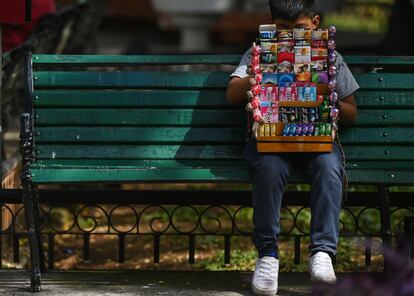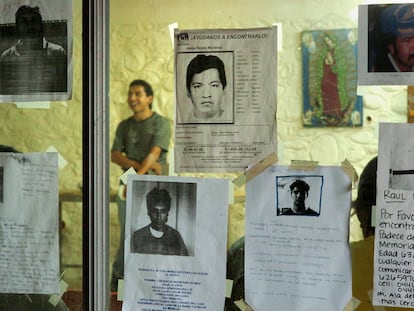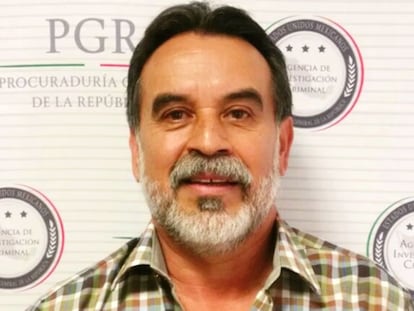From drug trafficking to tobacco: Cigarettes become a new branch of business for Mexican cartels
The black market in cigarettes as a business and money laundering option for organized crime accounts for up to 30% of a $25 billion smuggling industry


Among shipments of textiles and footwear entering the port of Colón in Panama, dozens of containers with illegal cigarettes circumvent customs controls every month en route to the domestic market and to be re-exported to other countries. In parallel to drugs and weapons, tobacco smuggling by drug trafficking groups has increased in recent years, warn port authorities and social groups in Latin America. Juan Carlos Buitrago Arias, a retired Colombian police general and leader of the public-private alliance between Colombia, Ecuador, and Panama (Coepa) to curb this crime, says that tobacco has become a branch of business for Mexican criminal organizations such as the Sinaloa Cartel. According to his research, cocaine, methamphetamine, and fentanyl cartels in the region use the same networks and routes to smuggle illegal cigarettes — mostly from Asia — to widen the black market for this product and launder drug money.
Buitrago Arias says that smuggling in Mexico is valued at some $25 billion a year, of which 30% corresponds to the black market in cigarettes. “In our investigations, we have identified that Mexico plays a similar role to Panama in terms of the influence of transnational organized crime. Specifically, drug trafficking uses the illicit trade of cigarettes, alcohol, clothing, household appliances, and gold to monetize drug trafficking profits,” he says.
Buitrago Arias says that in 2019, while still an active general in the Colombian police, he was in charge of Operation Empire, a tactic to dismantle the structure of cigarette and liquor smuggling operated by the Sinaloa Cartel and whose detection originated from the seizure of $100 million from Joaquín “El Chapo” Guzmán’s cartel in Los Angeles. Buitrago Arias states that the routes used by Mexican cartels to move drugs and weapons are now used to move tobacco to other destinations such as the United States, but they also enter the domestic market, for example, in the Tepito neighborhood in Mexico City.
The transfer of illegal tobacco, mostly from Asia, he adds, has permeated most Latin American countries, with Panama being one of the main points of access. According to these investigations, criminal groups use Panama’s ports to re-export — without paying taxes — thousands of cigarettes in containers that return with contraband drugs, weapons and minerals. One of the most vulnerable points for smuggling is the Colón Free Trade Zone in Panama, which covers over 1,000 hectares and whose tax exemption mechanism for private companies made it the main port for re-exporting licit and illicit goods in Latin America and the Caribbean.
Cigarettes with brand names such as Gold City, Time or Bright, written in Chinese or English, enter Latin American countries for up to $1 per pack, compared to the almost $5 for which a legal pack is sold. The illicit tobacco, which is not subjected to sanitary or quality controls, enters Panama through smuggling routes and continues to the north of the continent by sea or land. Most of this merchandise comes from production centers in China, South Korea, India, and Cambodia, according to Coepa, which states that in Panama, Latin America’s logistic hub par excellence, 90.2% of the tobacco market is illegal, followed by Ecuador with 90% and Colombia with 40%.
According to Coepa’s analysis, the Panamanian government lost out on taxes worth some $300 million from the black market in tobacco in 2023, with 8.5 billion illegal cigarettes entering that country alone. In Latin America, the amount of taxes lost due to cigarette smuggling amounts to over $6 billion. Coepa has identified and analyzed more than 80 companies, 29 maritime, land, and air routes for illicit trade, and 14 criminal groups involved in tobacco smuggling.
The lucrative profits, combined with minimal penalties, make cigarette smuggling attractive for drug trafficking groups in Mexico, Colombia, Ecuador, and other Latin American countries. Gregoire Verdeaux, senior vice president of U.S. tobacco company Philip Morris International and part of Copea, says his goal is to replicate in Latin America the decline in cigarette smuggling achieved in countries such as Greece and Italy. “Many governments think that cigarette trafficking is not important, but this is not the case; it is part of the criminal system and the system is growing very rapidly,” he says.
Panama is not only a destination, but a transit point. Cigarettes are made generically in Asian factories specifically for smuggling and the fiscal advantages of Panama’s free and logistical zones are taken advantage of for distribution to the rest of Latin America. On the land route, the contraband goes up from the ports in Colón or Manzanillo in Panama to Paso Canoas (Costa Rica), and from there onward to countries such as Honduras, Nicaragua, Mexico, and the United States.
Alejo Campos, director of the Crime Stoppers collective for Latin America, warns that cigarette smuggling is a transnational crime that involves the trafficking of people, drugs, arms, and merchandise, with overlapping locations, routes, and criminal groups. Specifically, Campos’ organization works in Belize and Guatemala to prevent the transfer of cigarettes to Mexico. “In Guatemala, in the entire Petén department, Los Zetas and also the Barrio 18 gang controls the border crossing and, in the end, there is illegal trade not only in cigarettes but also of many products. What we are trying to do is contain the problem from Guatemala, destroying the product in that country, and with that to prevent them from passing to Mexico,” he says.
Authorities and social groups agree that the lack of resources in customs to invest in more technology and controls, as well as corruption and lax legislation, contribute to cigarette smuggling gaining ground year after year. “It is necessary to create more effective laws to prevent, prosecute, and punish this crime, and also to offer alternatives to the tobacco-consuming public,” says Campos.
From tobacco factories in China, Cambodia, or India to the Colón Free Trade Zone in Panama, one of the biggest in Latin America, thousands of generic cigarettes, legally produced in their countries of origin, travel thousands of miles to be repackaged and re-exported to other destinations illegally, sidestepping taxes and without meeting the sanitary standards of their end markets. Clandestine tobacco routes have become yet another means of profit to be exploited by drug trafficking networks.
Sign up for our weekly newsletter to get more English-language news coverage from EL PAÍS USA Edition
Tu suscripción se está usando en otro dispositivo
¿Quieres añadir otro usuario a tu suscripción?
Si continúas leyendo en este dispositivo, no se podrá leer en el otro.
FlechaTu suscripción se está usando en otro dispositivo y solo puedes acceder a EL PAÍS desde un dispositivo a la vez.
Si quieres compartir tu cuenta, cambia tu suscripción a la modalidad Premium, así podrás añadir otro usuario. Cada uno accederá con su propia cuenta de email, lo que os permitirá personalizar vuestra experiencia en EL PAÍS.
¿Tienes una suscripción de empresa? Accede aquí para contratar más cuentas.
En el caso de no saber quién está usando tu cuenta, te recomendamos cambiar tu contraseña aquí.
Si decides continuar compartiendo tu cuenta, este mensaje se mostrará en tu dispositivo y en el de la otra persona que está usando tu cuenta de forma indefinida, afectando a tu experiencia de lectura. Puedes consultar aquí los términos y condiciones de la suscripción digital.
More information
Archived In
Últimas noticias
There is as much life left to discover on planet Earth as that which is already known
Dozens presumed dead, around 100 injured in fire at Swiss Alps bar during New Year’s celebration
Is porn for women different from conventional porn? We spoke to those who make it
Cartagena de Indias is sinking: What can the city do to mitigate it?
Most viewed
- David King, chemist: ‘There are scientists studying how to cool the planet; nobody should stop these experiments from happening’
- Reinhard Genzel, Nobel laureate in physics: ‘One-minute videos will never give you the truth’
- Oona Chaplin: ‘I told James Cameron that I was living in a treehouse and starting a permaculture project with a friend’
- Sinaloa Cartel war is taking its toll on Los Chapitos
- The Interoceanic Train, the Mexican alternative to the Panama Canal










































